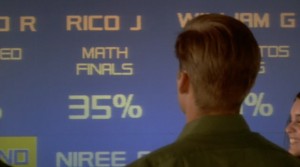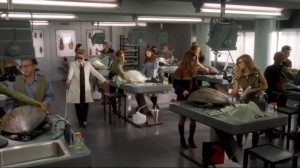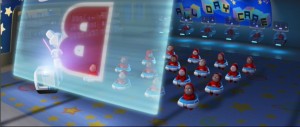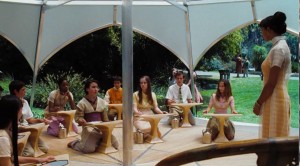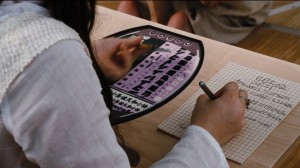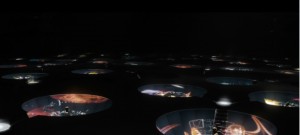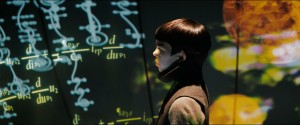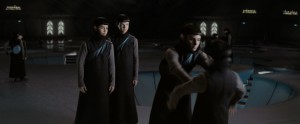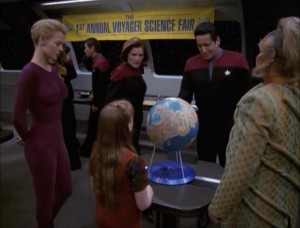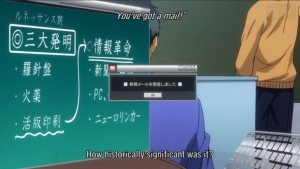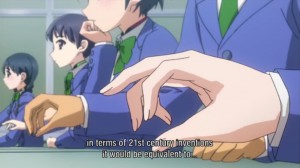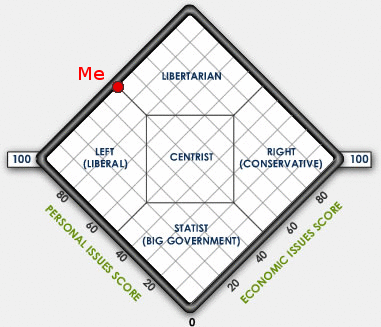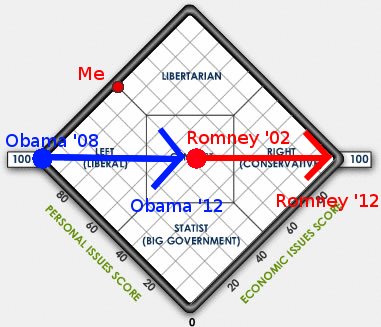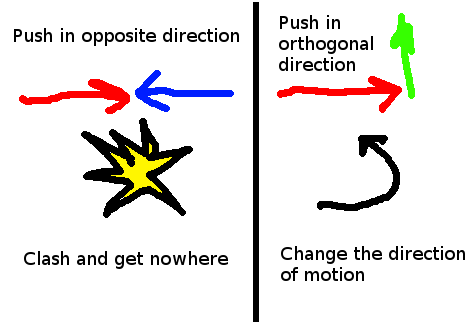I’ve seen a lot of new mesmers on SoR and occasionally I get questions about gear, traits and general WvW tactics. In an effort to help some of aspiring SoR mesmers out, I decided to put together this mini-guide with some general information about playing a mesmer in WvW. This is not a “here’s Flash’s build, just copy it and pwn face” thread, but rather a look at some of the options you have available to you as a mesmer and how to use your tools most effectively.
I. Weapons
Early on in your Mesmer career, you should be experimenting with the different weapons available to you. Each weapon has different strengths and weaknesses, and the weapons you choose use will have a large impact on how your Mesmer plays. Scepter, Staff and Torch tend to complement a condition damage build. Sword and Greatsword tend to complement a power build. However, any weapon can be used in either if you trait and gear appropriately.
My personal opinion is that Sword and Focus is the way to go for WvW. The focus is clutch in WvW for providing group swiftness, pulling people off of walls and ledges, and negating projectiles. The main reason for using sword is the two seconds of invulnerability with Blurred Frenzy. This can be a real life saver in a pinch. Scepter and Focus can be a decent while leveling up since it allows you to stay out of melee range, but the block on the 2 skill is sub-par in comparison. I use greatsword on my weapon swap for the AoE cripple in open field fights, but switch to a staff in siege situations to AoE up walls. You can run both Greatsword and Staff if you like, but you’ll probably want to use a rune set for swiftness to get around faster.
II. Traits
Your first 5 trait points for any build should go into Illusions. This minor trait is pretty much mandatory for any mesmer, because it reduces the cool-down of all illusion summoning skills by 20%. Since most of your DPS comes from illusions, either directly through phantasms or indirectly through shatters, this is a very effective DPS increase across the board. This trait is arguably too good to pass up considering how few trait points are needed to acquire it. As you continue leveling up to 40, your next points should go into Dueling and Domination for the stat increases because you don’t really have many options for condition damage at that level.
At level 40 the whole game changes because you gain access to the 2nd tier of traits. Putting 20 points into Dueling is almost mandatory. Choose II and X as the Majors. Together, these traits give you vigor on crit, fury on phantasms, bleeding on illusion crits, and clones on dodge. The reason I say that these are almost mandatory is the “clone on dodge” trait. This is both an offensive tool and a defensive tool that will significantly alter how you play. For the first time, you’ll actually generate illusions at a fast enough rate to make full use of your shatter skills.
A lot of PvE mesmers avoiding using shatter skills because keeping up 3 phantasms can output a significant amount of damage. In WvW, this doesn’t work because your phantasms simply will not live long enough. Instead, you should allow your phantasm to execute its first attack and then shatter it to add AoE damage on top of it. You can also use your shatters defensively. A dodge or two followed by Diversion or Distortion can buy you a few seconds to escape, which can mean the difference between life and death in WvW. The vigor on crit trait makes sure you have a steady supply of endurance to keep dodging with.
In addition to Deceptive Evasion, the 15pt minor makes your illusions inflict bleeding on critical. This trait is essential because it makes your previously damage-less clones actually put pressure on the opponent. This trait is a solid 10%-20% DPS increase even if you don’t spec for condition damage. If you are speccing for condition damage, this trait is essential for stacking bleeds on your opponent with weapons that otherwise would not have condition damage on them.
Once you’ve filled out the essential 0/20/0/0/5 traits, the rest of your traits are really up to you. Take a look at the major traits in tiers 2 and 3 and see what interests you. I’ll cover some of the more common variants that you’ll see in WvW.
20 in Domination: The notable major here is Shattered Concentration which makes your shatter skills strip boons. This is a highly valuable thing to in the current meta where zergs stack and buff up before charging into fights. The minor traits adding vulnerability are a nice bonus. Condition builds might also like Confusing Enchantments which causes confusion to foes that enter or exit glamours. This works well because people have a natural tendency to move out of red circles.
30 in Dueling: Empowering Mantras can provide a nice passive damage bonus for each prepped mantras. I’m not a big fan of the mantra play style, but it’s a common variant that’s worth mentioning.
20 in Chaos: Going 20 points into Chaos can give you “Descent into Madness” and “Mirror of Anguish”. The former reduces fall damage by 50% while the latter will apply crowd control effects to the person that used it on you. Both of these traits together give you a big advantage on high terrain.
20 in Inspiration: The notable WvW trait in the Inspiration is Warden’s Feedback. This makes your focus skills reflect projectiles. A very significant amount of the damage in WvW is projectile based and this trait turns Temporal Curtain into a valuable tool for both offense and defense.
30 in Illusions: The big trait in this tree is Illusionary Persona. This trait adds a shatter effect on you in addition to your illusions. This adds extra punch to your shatters when in melee range, but the big bonus is that it allows you to use your shatter skills without any illusions at all! Being able to use Distortion with no illusions for 1 second of invulnerability can save your life if you get hit by a backstab thief or bull rush warrior. Add Illusionary Invigoration and you get two extra lives. Fair warning: once you try IP it’s hard to go back to life without it. Another common variation for condition builds is to take both Dazzling Glamours and Blinding Befuddlement, which make glamours cause blind and confusion. The 15pt minor adding confusion to all shatters is also a must for condition builds.
Remember that you can always change major skills when out of combat. Keep this in mind when creating your build so that you can adapt to different situations. For example, I like to switch between Mender’s Purity and Glamour Mastery in Inspiration depending on whether or not I have Null Field equipped so that I always have some form on condition removal.
III. Stats and Gearing
First and foremost, you goal with gearing should be to stay alive. This means you should be stacking toughness and vitality until you stop dying, and then start focusing on increasing your DPS. For a power build, I’d suggest about a 50/50 mix of Soldier’s gear (Power/Toughness/Vitality) and Berserker (Power/Precision/Crit Damage). For a condition build, Rabid (Condition Damage/Precision/Toughness) is the way to go, perhaps with a bit of Carrion (Power/Vitality/Condition Damage) to increase your HP and help against siege. While the options are limited, gear with “+ to all stats” can be effective in either case.
My personal preference is with the power oriented gear. Condition mesmers can be quite deadly in WvW against players, but conditions do not effect siege weapons and taking down siege weapons quickly is very important in WvW. If you want go the condition route you might want to lean more towards a hybrid spec using Rampager’s (Precision/Power/Condition Damage).
There’s something of a sweet spot with vitality and toughness that will maximize your “effective health”. Take your total armor (base+toughness) and multiply it by 10. If the result is less than your total HP, then you need more toughness. If the result is greater than your total HP, then you need more vitality. At your discretion, you can run healing power instead of vitality but I wouldn’t really recommend it outside of some very specific support builds.
Keep in mind that your illusions only benefit from Power, Precision, Critical Damage, Condition Damage, and Toughness. Your illusions have fixed health regardless of your Vitality and the boons and conditions they apply will not be extended by boon or condition duration bonuses. If you find your illusions are dying before they reach their targets, you might want to add more Toughness.
IV. Sigils
If you’ve followed my advice so far, then you probably have a high enough critical rate to open up a variety of options for Sigils. In particular, Sigil of Earth allows you apply bleeds with weapons that ordinarily would not apply conditions (i.e. Sword) and is essential if you plan on going with a condition/hybrid spec. Sigil of Earth is still good in a power build, but Strength, Blood, Air, Fire, Force and Accuracy are all good options as well. Obviously you’d want Bloodlust or Corruption on at least one of your weapons as well, and you can always switch weapons later and keep the stacks. Sigil of Energy is another common option, as the extra endurance will help keep you alive and can also be used offensively to create more clones.
V. Runes
There are a number of viable options for Runes as well, depending on what you need to complement your build. Air and Centaur runes are commonly used for the swiftness on heal effect because mobility is very important in WvW. Scholar runes are probably the best option for increasing your damage, but Ruby orbs can be a cost efficient alternative. Divinity runes would probably work well regardless of your spec, as you benefit from all the stats provided, but are pretty expensive also. Infiltrator runes are nice and affordable option because the stealth effect at 10% health will cause your opponent to lose target on you and have to pick you out from your clones again. Undead is a nice option for condition builds as it complements the 25pt Chaos trait nicely. Melandru runes could be helpful if you find yourself struggling against crowd control effects. Remember that you can always experiment with various other options in sPvP without spending any gold.
VI. Food Buffs
My personal favorite food buff is the Omnomberry Pie. Regardless of whether you’re a power or condition build, you benefit from the bonus to precision. The life steal on crit will contribute to both damage and healing at the same time. Foods that reduce stun or condition duration are also a good choice. You can also use generic Power or Condition Damage food depending on your spec.
At some point you should make a trip to Wayfarer Foothills to buy the animal spirit offerings from the heart venders. Head to the Iron Marshes and pick up the Scale Venom from the escort event in the south eastern part of the map (Edit: Scale Venom is slated to be removed from WvW in the next patch). These bonuses are very small, but you might as well take advantage of them while they still can be used in WvW.
Edit: Kaska drew my attention to Orrian Truffle and Meat Stew, which gives Might on Dodge and +40% Endurance Regen. This is another nice alternative that will add to both your damage (more dodges = more clones) and survival.
V. Skills
Healing Skills
You’ve got three options for healing. Ether Feast is the simplest to use, but often times you’ll need your heal the most when you don’t have any illusions up and will miss out on the bonus healing. Mantra of Recovery is actually the best healing-per-second Mesmer skill (even untraited), but takes some getting used to because you need to prep it in advance. MoR is also unique in that it can be used while stunned or knocked down. Mirror is my personal favorite, but in order to get the most of it you need to be proactive about reflecting projectiles. MoR and Mirror both synergize nicely with “on heal” effects from runes or traits because of the low cool-downs. I’d recommend that you start out using Ether Feast and transition to Mirror or MoR later depending on your play-style.
Utility Skills
The utility skills are where mesmer really shines. Here are some of the more important WvW ones ordered by tier:
Tier 1
Blink – This one never leaves my bar. It breaks stuns and teleports you to the target location.
Decoy – Breaks stun, summons a clone and provides 3s of stealth. It’s an all-around great skill.
Null Field – Removes boons from foes, conditions from allies, and provides an ethereal combo field. It seems to affects 5 enemies and 5 allies with each pulse (though not necessarily the same ones).
Tier 2
Feedback – Creates a bubble that reflects projectiles. Centered on target if you have one, or ground targeted otherwise. Use it on your gate while defending and watch the damage numbers fly. It counts as an ethereal field and reflected projectiles count as a finisher, so they have a chance to apply confusion also. It doesn’t appear to have a target cap.
Mirror Images – Breaks stun and summons 2 clones. Use this between two quick shatters for some nice spike damage.
Tier 3
Portal Entre/Exeunt – Used to move groups of people from one location to another, particularly golems. Note that it is limited to about radar range and provides no indicator if you exceed the max. Learn to judge the distance well so that it doesn’t fizzle. I cover more on portal tactics later. The portal is limited to 20 uses.
Veil – Provides allies crossing it with 4s of stealth. Use it to hide your group’s initial melee rush or to make an escape from combat. It doesn’t appear to have a target cap. The tool tip for this skill incorrectly lists it as a light field, when in fact it functions as an ethereal field.
Mimic – A pretty sub-par skill compared to Feedback, but it’s worth mentioning here because it can absorb ballista shots. You’ll only use this skill in situations where you’re trying to protect siege from ballista fire.
Mantra of Concentration – Again, not a great skill overall, but it’s a mesmer’s only source of stability and there might be situations where you need it.
Elite Skills
Time Warp – Easily the best mesmer elite. Use this on melee during a rush or on golems. Has a 5 target cap.
Moa Morph – Not worth it in WvW at all because 1 on 1 situations are so rare. Only unlock it to move to next tier.
Mass Invisibility – It’s worth unlocking, but very situational. Equip it when you’re solo (either roaming or hiding) so that you can avoid unnecessary confrontations. Note that this skill is limited to 10 targets.
VI. General Game-play
Mesmer is kind of a unique class. None of the skills do exceptionally high damage on their own like a Warrior’s Killshot or Thief’s Backstab. Instead, the mesmer’s specialty is dealing moderate damage from multiple sources simultaneously. Your goal is stack as many skills as you can into as small of time frame as you can. You can potentially hit with a phantasm, a direct damage skill, a shatter skill, and a utility skill all at the same time. This can add up to large “spikes” of damage, but requires that you do a lot of planning in advance to set it up. However, the end result can be quite deadly when you pull it off.
Since my preferred weapon combination is sword/focus, I’ll use that as an example to illustrate the concept. Here, we’ll use Mirror Images as a utility skill and Deceptive Evasion/Illusionary Persona as traits. I open with Illusionary Leap, which spawns a clone that leaps to the foe and cripples them. I follow this with iWarden, and immediately after it finishes casting hit Swap. This immobilizes the foe next to the Warden and teleports me into melee range. While the Warden is wailing on them, I supplement this with Blurred Frenzy. Once the Blurred Frenzy finishes, I dodge forward to generate my third clone, shatter with Mind Wrack, follow with Mirror Images and a dodge back for 3 more clones, and finally shatter with Cry of Frustration. This is more than enough to down glass cannons in about 3 seconds, and any opponents that do survive are left with 12 stacks of confusion and about 4-5 stacks of bleeding.
With a condition mesmer, the same concepts still apply but the set-up is a little more complicated. The basic idea is to continually spawn clones to apply bleeding (and burning in the case of staff) to your opponent to gradually work their health down over time. While doing this, you want to pay close attention to that opponent’s behavior. You want to be able to predict when they’re about to attack and hit them with Cry of Frustration. The goal here is to create a “damned if you do, damned if you don’t situation”. The opponent can try to kill you and eat the confusion damage, or they can stop attacking and sit there while the bleeds tick away at their health. Most of your damage as a condition mesmer is going to come from confusion, so you want to time your skills to put as many stacks of it on them while they are attacking. If you combine shatters, phantasms, direct skills, and utilize your ethereal fields creatively, it’s quite possible to put up to 25 stacks of confusion on an opponent by yourself for a short period of time. Another good tactic to use is to stun or daze your opponent before you start stacking confusion. People have a natural tendency to use skills immediately after their skills become available again.
VII. Fun with Portals
Mesmers are uniquely valuable in WvW for their ability to teleport groups across large distances very quickly using Portal Entre/Exeunt. Here are some situations where you might use portals to great benefit:
Supply Runs – Running supply is a good place to practice judging the portal placement range because it’s a very low risk situation. Place your portal outside the supply camp, run in to pick up supply, then portal back to your original location. One very special situation to use this is at the north-west tower in the borderlands. If you place a Portal Entre at the very back of the lord’s room and place the Exeunt near the base of the cliff at the supply camp, you can teleport all the way back into the tower! Because of the large elevation difference between the tower and supply camp, this can save a substantial amount of travel time and allows you to avoid the front entrance if it’s under attack.
Escape Portals – Having a Portal Entre placed before engaging enemies can provide you with a nice safety net if things go bad. This is especially useful when defending keeps or towers because it allows you to safely stand on the wall without fear of being pulled off. If you’re on teamspeak, as you should be, call out “escape portal” so that they know it will take them to safety as well.
Retreat Portals – Sometimes it’s helpful for you to support a group retreat by placing your Entre near your commander, running away from the enemy forces, and then dropping the Exeunt. Try to give your allies a few seconds notice before dropping the Exeunt so that they can start heading towards the Entre before it opens. If your commander wants to reengage afterwards, drop a Veil to stealth your group to make it look like you’ve ported out.
Feigned Retreat Portals – The basic idea behind this portal is that you place the Entre in an inconspicuous location and retreat as a group. When the enemy forces chase your retreating group past the portal, you open the Exeunt and teleport your group behind them to hit the backline. This tactic is a high risk maneuver because if the enemy spots your Entre on the group they may focus AoEs on your group when it becomes active. Try to use the terrain to place your Entre out of sight to avoid this situation. If you think your portal has been spotted, warn your group not to take it and open the portal anyway. This may cause the enemy to blow their cool-downs on the portal and give your group an opportunity to push from the front.
Offensive Portals – The offensive portal is often the hardest to pull off but also the most useful. A well placed offensive portal can allow you to flank enemy forces or take out hard to reach siege weapons. I’d highly recommend that you break command before attempting this tactic so you can adjust your skill set. I typically use Mirror, Blink, Decoy or Veil, Portal, and Mass Invisibility for this situation. Open with Temporal Curtain to give yourself swiftness and follow with Mass Invisibility for 5 seconds of stealth. Pay close attention to the red circles on the ground and blink past or dodge roll through them. When your stealth fades, you can use Decoy or Veil to provide you with a few more seconds. Keep in mind that your blink is most effective when used to teleport to higher ground. In particular, you can teleport to the ramp leading to the 3rd floor of Garrison in borderlands by targeting the underside of the geometry. If you’re spotted, use Mirror to reflect incoming projects for an extra second of protection because the last thing you want in this situation is to be crippled, chilled or immobilized!
Ninja Portals – This type of portal is used to take groups past the wall of a keep or tower that you previously had access to, allowing your group to recap it later. Spend a few minutes in each tower and keep to look for hiding spots. Follow around a more experienced player on a mesmer sweep to learn some of the common locations. Equip your stealth skills to buy you some extra camouflage. If the enemy is thorough with their sweeps, you’re probably going to get found regardless of where you hide. If this happens, ask if there are any thieves in the tower/keep before releasing as you might be able to get a res. Learn the safe spots where you can jump down form each keep/tower so that you don’t die from fall damage.
Portal Chains – The last type of portal requires multiple mesmers. This is mainly used to transport golems over large distances. It helps to form an all-mesmer group to pull this off. First decide on an order. Alt click the minimap in the direction you’d like to travel to place a personal waypoint. This serves as a marker for where the next mesmer should start. Once all your waypoints are placed, call “drop and go” in TS. Place the first portal and run toward your waypoint. You need to stagger your portals by a few seconds to give the golems time to move into position, and call “1st”, “2nd”, etc. so that the other mesmer know when to drop their exits. It’s important that you do not overlap portals either, as it makes it difficult to get the interaction prompt. Typically its easiest if you Time Warp the golems in the same order as you ported them. It also helps if the mesmer who drops the first portal is spec’d for Glamour Mastery so that it comes off cool-down in time to provide an escape portal if necessary.




